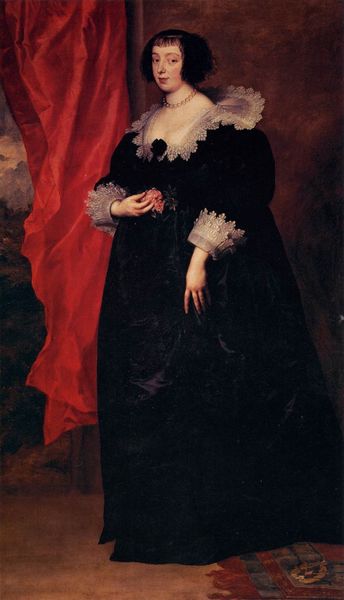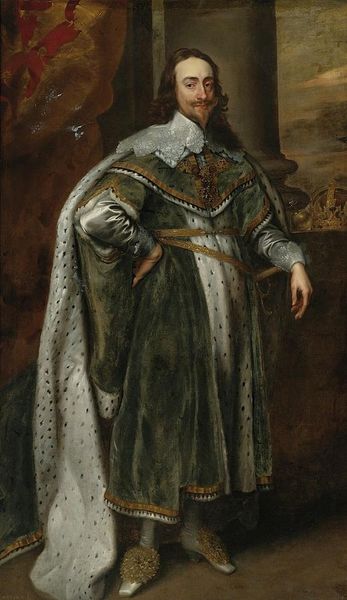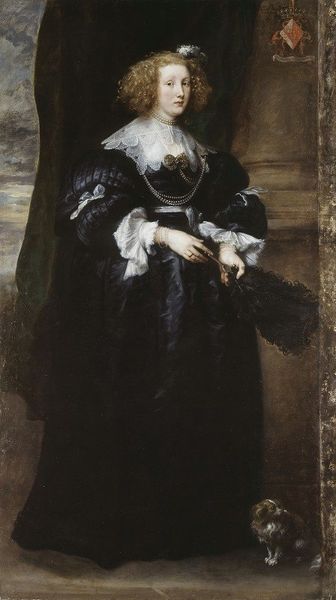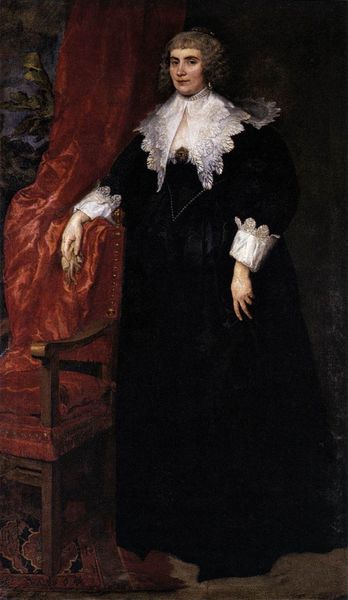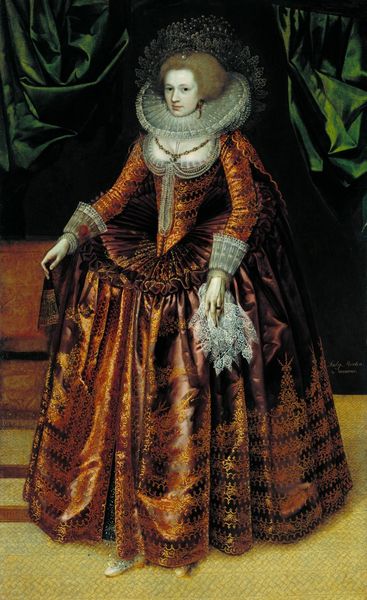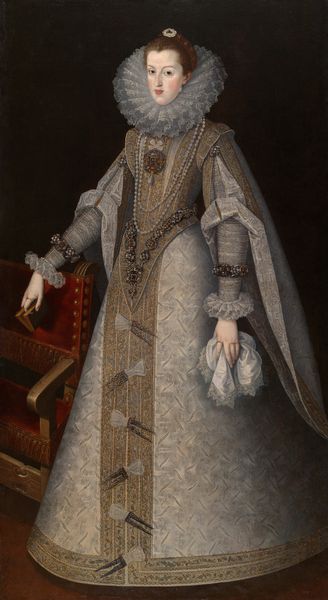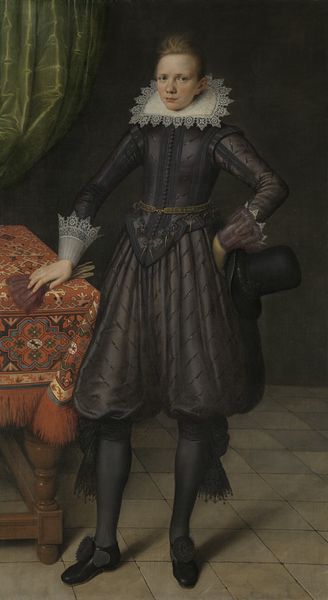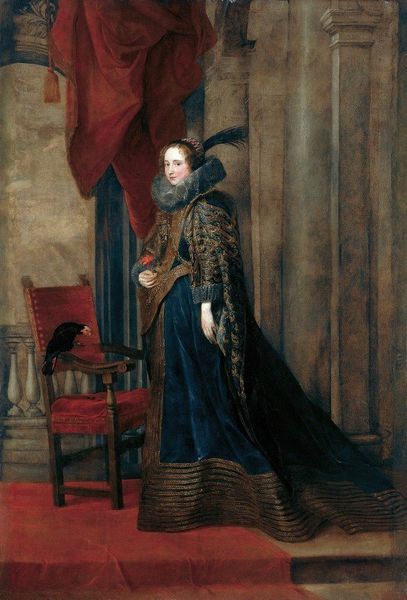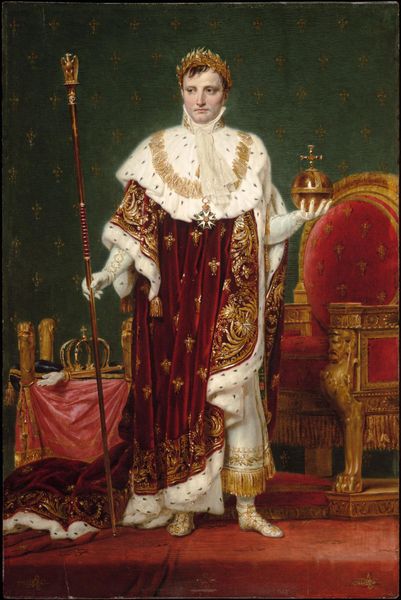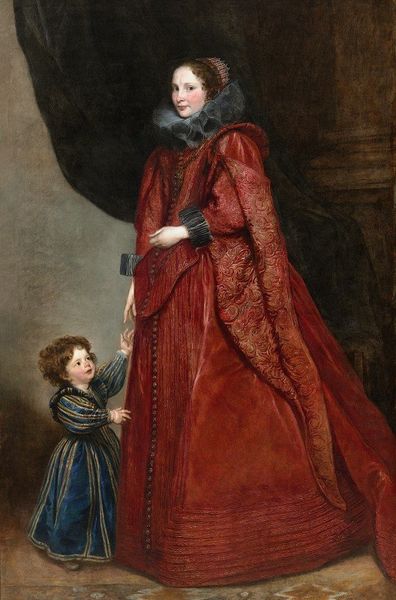
painting, oil-paint
#
portrait
#
figurative
#
baroque
#
painting
#
oil-paint
#
figuration
#
history-painting
#
realism
Copyright: Public Domain: Artvee
Anthony van Dyck painted this portrait of Marchesa Balbi, capturing her in a moment of serene aristocratic poise. The elaborate ruff around her neck is a striking symbol of status and formality. Consider the ruff not merely as a fashion statement, but as a signifier of rigid social structures. It constricts, yet elevates, much like the expectations placed upon women of nobility. We see echoes of this in earlier, even more restrictive forms of neckwear across various cultures, each imposing a physical boundary that mirrors societal constraints. The gesture of her hand, gently resting, connects to the iconography of female portraits across time, where hands often convey virtue, control, or even latent power. The fan, held loosely, isn't just an accessory; it's a subtle emblem of her ability to navigate social complexities. Note how such a gesture appears and reappears, shifting yet resonant, from ancient Roman frescoes to the canvases of the Renaissance. It's a fascinating evolution, each iteration carrying layers of historical and personal meaning.
Comments
No comments
Be the first to comment and join the conversation on the ultimate creative platform.
